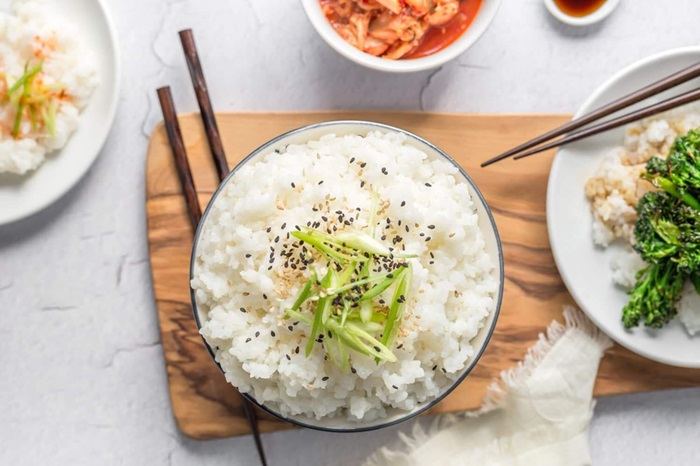Rice is the cornerstone of Chinese cuisine, symbolizing sustenance and abundance. Mastering how to cook perfect Chinese rice can elevate your meals and connect you with centuries of culinary tradition. This guide will delve into the history, preparation, and cooking techniques for Chinese rice, offering detailed recipes and cultural insights that bring this staple food to life.
Understanding Chinese Rice
Chinese rice comes in various types, each suited to different dishes:
Types of Rice
Jasmine Rice: Known for its fragrant aroma and long grains.
Short-Grain Rice: Sticky texture, ideal for sushi or fried rice.
Glutinous (Sticky) Rice: Used in desserts and special dishes like zongzi.
Brown Rice: Nutritious option, rich in fiber and minerals.
Cultural Significance
In Chinese culture, rice is more than just food; it’s a symbol of prosperity and nourishment. Serving rice at meals signifies hospitality and care. The ancient practice of cultivating rice has shaped Chinese agriculture and society, making it an integral part of daily life and celebrations.
Nutritional Benefits
Energy Source: Provides essential carbohydrates for energy.
Rich in Fiber: Supports digestive health.
Vitamins and Minerals: Contains B vitamins and iron.
Low Fat: Suitable for those watching their fat intake.
Preparing Chinese Rice
Proper preparation ensures the best flavor and texture:
Steps for Preparation
Select Quality Rice: Choose high-quality rice suitable for your recipe.
Rinse Thoroughly: Rinse rice until water runs clear to remove excess starch.
Measure Water Accurately: Use the correct water-to-rice ratio (typically 2:1).
Cook Properly: Steam or boil according to package instructions.
Let Rest: Allow cooked rice to rest before serving to absorb remaining moisture.
Cooking Perfect Chinese Rice
Ingredients
- 2 cups jasmine rice (or other preferred type)
- 2 1/2 cups water
- 1 tablespoon vegetable oil (optional)
Instructions
Rinsing: Place rice in a fine mesh strainer under cold running water. Rinse until water runs clear, which removes excess starch and prevents clumping.
Soaking (Optional): Soak rinsed rice in water for about 30 minutes. This helps achieve a fluffier texture.
Draining: Drain the soaking water thoroughly.
Combining: In a medium-sized pot with a tight-fitting lid, combine rice and water. Add vegetable oil if desired for added flavor and fluffiness.
Boiling: Bring to a boil over high heat.
Simmering: Once boiling, reduce heat to low, cover, and simmer for about 18 minutes without lifting the lid.
Resting: Remove from heat and let stand for 10 minutes without lifting the lid. This allows steam to distribute evenly, resulting in perfectly cooked rice.
Fluffing: Fluff rice with a fork before serving to separate the grains.
Variations on Basic Rice
Fried Rice
Fried rice is a versatile dish that uses leftover rice, adding vegetables, proteins, and sauces.
Ingredients
- 3 cups cooked rice (preferably day-old)
- 2 tablespoons vegetable oil
- 2 cloves garlic, minced
- 1 inch piece ginger, finely chopped
- 1 cup mixed vegetables (carrots, peas, corn)
- 1/2 cup diced ham or cooked chicken
- 2 eggs, lightly beaten
- 2 tablespoons soy sauce
- Salt and pepper to taste
- Green onions for garnish
Instructions
Heat oil in a wok or large skillet over high heat.
Add garlic and ginger; stir-fry until fragrant.
Push garlic and ginger to the side of the pan; add beaten eggs to the center. Scramble until set.
Add vegetables and meat; stir-fry for about 3 minutes until vegetables are tender-crisp.
Add cooked rice; stir-fry for another 3-4 minutes until heated through.
Pour in soy sauce; stir to coat evenly.
Season with salt and pepper.
Garnish with green onions before serving.
Congee (Rice Porridge)
Congee is a comforting dish often served as breakfast or during illness.
Ingredients
- 1 cup jasmine rice
- 8 cups water or broth
- 1-inch piece ginger, sliced
- Salt to taste
- Toppings (pickled vegetables, century eggs, lean pork)
Instructions
Rinse rice under cold water until water runs clear.
In a large pot, combine rice, water or broth, and ginger slices.
Bring to a boil over high heat.
Reduce heat to low; simmer gently for about 1 hour, stirring occasionally to prevent sticking.
Season with salt to taste.
Serve hot with desired toppings.
Conclusion
To conclude, Chinese rice is more than just a side dish; it’s a central element of Chinese culinary tradition. By mastering the art of cooking perfect Chinese rice, you not only enhance the flavors of your meals but also connect with a rich cultural heritage. Whether you’re preparing basic steamed rice, creating a hearty fried rice, or enjoying a comforting bowl of congee, each grain tells a story of generations past.
By following these recipes and preparation tips, you can enjoy the best of what Chinese rice has to offer. Always consider your dietary needs and consult healthcare professionals for personalized advice. Embrace the cultural significance and nutritional benefits of Chinese rice, and savor each bite as part of a balanced and enjoyable lifestyle.
Celebrate the joy of cooking and eating these meaningful dishes with loved ones. Share the flavors and stories behind Chinese rice, and let the traditions continue to thrive in your home. With its versatility and depth of flavor, Chinese rice can elevate any meal, making it more delightful and memorable. Enjoy the warmth and richness of Chinese cuisine, and let it become a staple in your kitchen.
Related topics:


